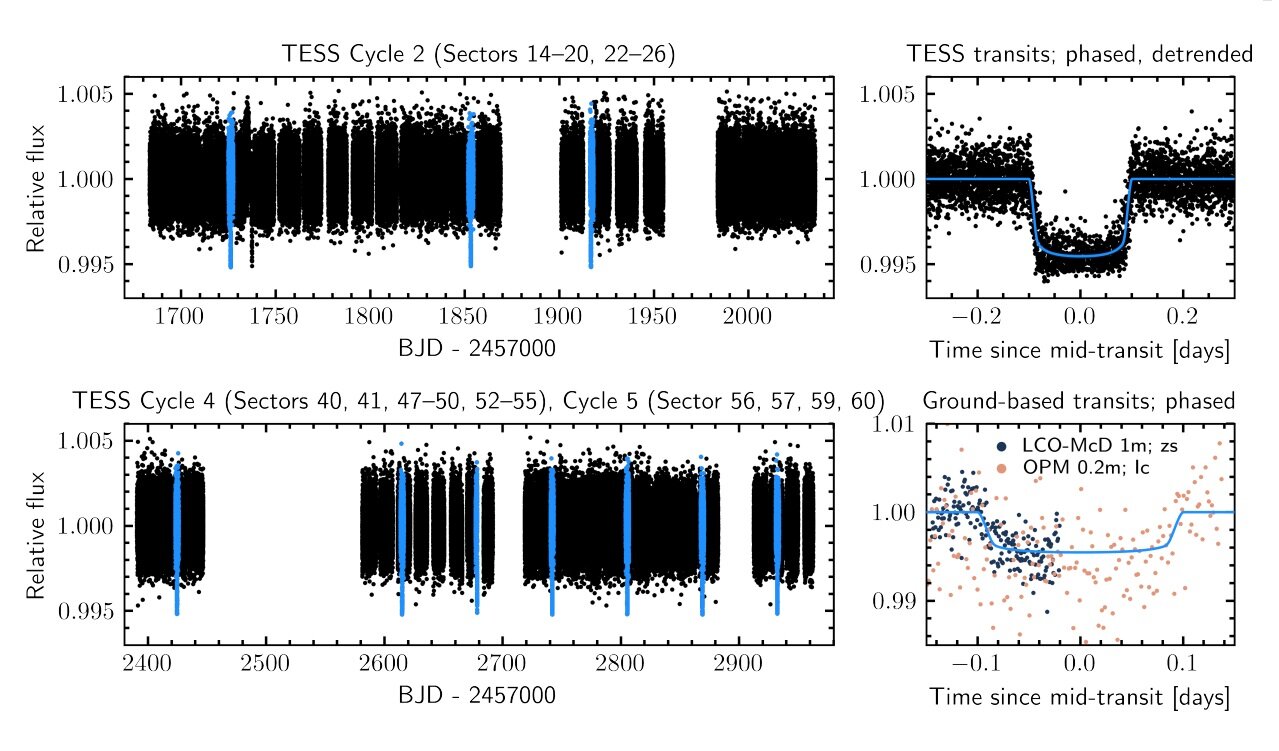New 'warm Jupiter' exoplanet has a weird orbit and another planet may be to blame
The orbit of the newfound exoplanet spotted with TESS may have been influenced by another planet.

Astronomers have discovered a new "warm-Jupiter" planet with a strange, flattened and misaligned orbit around its parent star.
The exoplanet, designated TOI-1859 b, was discovered using NASA's Transiting Exoplanet Survey Satellite (TESS), which spots planets by the dip in light they cause as they cross, or "transit," the face of their star.
The team then followed up on this observation two more times, using the ground-based facilities of the TESS Follow-up Observing Program. They confirmed the presence of the planet by observing it as it crossed its star, called TOI-1859, which is located around 730 light-years from the solar system.
Related: New 'warm Jupiter' exoplanet discovered by NASA's planet-hunting satellite
The astronomers determined that TOI-1859 b takes around 64 Earth days to orbit its parent star, which is about 1.3 times the size of the sun. With an estimated diameter of around 78,000 miles (126,000 kilometers), the newly discovered exoplanet is slightly smaller than its solar system namesake, Jupiter, and nearly 10 times larger than Earth.
Astronomers haven't yet determined the mass of TOI-1859 b, but they found that the planet's orbit is highly eccentric, or flattened, and misaligned in relation to its star.
The strange orbit of this warm Jupiter could be the result of interactions with other planets in the planet's cosmic neighborhood, the team said in a paper accepted for publication in The Astrophysical Journal Letters and published in the preprint database arXiv.
Breaking space news, the latest updates on rocket launches, skywatching events and more!
The characteristics of the orbit are consistent with the theory that multiple gas giants form around stars that are rich in "metals," meaning elements heavier than hydrogen or helium, and then migrate to outer regions of their planetary systems. This migration is caused by gravitational interactions between these planets, which can also leave the gas giants that remain close to their stars with misaligned and eccentric orbits like that of TOI-1859 b.
The team theorized that, alternatively, the planet's orbit might have been caused by an encounter with a "brown dwarf" in the system. Brown dwarfs are often described as "failed stars" because they are more massive than gas giants but too small to trigger the nuclear fusion processes that define stars, and their discovery gives astronomers a better understanding of the dividing mass line between stars and planets.
Warm but not hot
Whatever interaction left TOI-1859 b in its current orbital state also resulted in the planet coming to a distance of around 30 million miles (49 million km) from its host star — around one-third of the distance between Earth and the sun.
This exoplanet's proximity to its star likely gives it a warmer surface temperature compared with our planet, making it a "warm Jupiter." This class of worlds is distinct from the most commonly found exoplanets, so-called hot Jupiters, which are closer to their parent stars and often orbit them in just a few Earth days or, in some cases, in less than a day.
As the name suggests, the surface temperatures of warm Jupiters are dwarfed by those of hot Jupiters, which can reach a scorching 1,300 degrees Fahrenheit (725 degrees Celsius) — hot enough to vaporize iron and give rise to extreme conditions. On the exoplanet WASP-76b, for example, this iron vapor is blown to the nightside of the planet by powerful winds, causing it to condense into droplets of iron that rain down onto the planet's surface.
Many hot Jupiters are tidally locked to their stars, meaning they have a permanently facing "dayside" that is constantly belted with radiation from the parent star and a cooler — but still incredibly hot — permanently space-facing "nightside."
The team will further investigate TOI-1859 b's planetary surroundings to discover the cause of its strange orbit. This will include searching for other planets or brown dwarfs around the dwarf star TOI-1859. They will also consider if the planet's unusual orbit might be the result of its host star's temperature, potentially revealing more about warm Jupiters.

Robert Lea is a science journalist in the U.K. whose articles have been published in Physics World, New Scientist, Astronomy Magazine, All About Space, Newsweek and ZME Science. He also writes about science communication for Elsevier and the European Journal of Physics. Rob holds a bachelor of science degree in physics and astronomy from the U.K.’s Open University. Follow him on Twitter @sciencef1rst.

